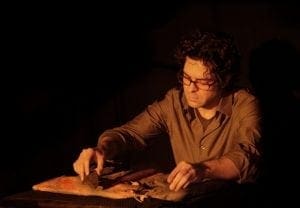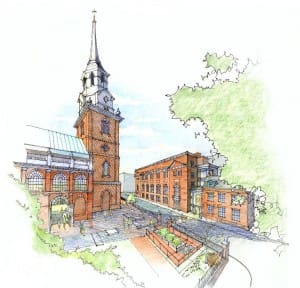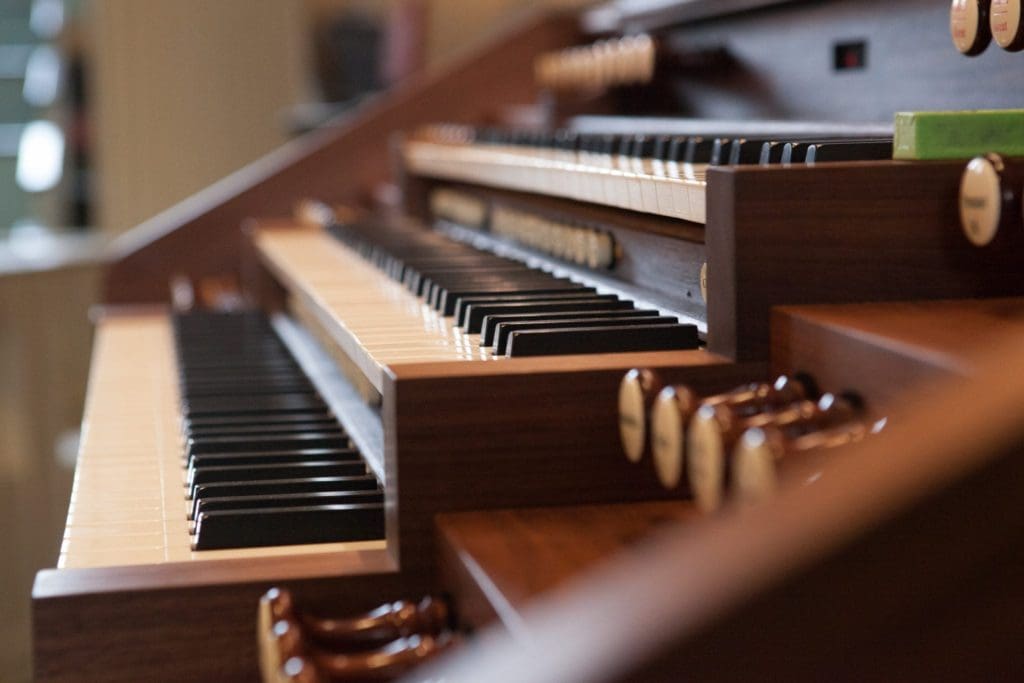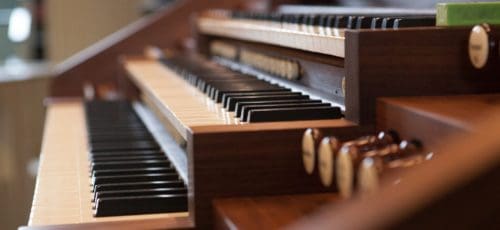In Plain Air Will Close the Fringe Festival on a High Note
The 2018 Fringe Festival signs off this weekend on a high note. And a low note. And all varieties of notes in between. A free multi-movement program by International Contemporary Ensemble, In Plain Air takes listeners around the historic Christ Church campus in five daytime performances September 22 and 23.
 Created by composers Phyllis Chen and Nathan Davis, In Plain Air celebrates the installation of the brand new C.B. Fisk pipe organ at Christ Church. It features work performed on the impressively huge new instrument, the centuries-old church bells, and all manners of other instruments. It’s the perfect project for Davis, a percussionist fascinated by the mechanics of instruments, whose work brings out the acoustics of sound-making devices and the physicality of playing them. Davis talked to FringeArts about the pieces that make up In Plain Air and the process leading to this weekend’s performances.
Created by composers Phyllis Chen and Nathan Davis, In Plain Air celebrates the installation of the brand new C.B. Fisk pipe organ at Christ Church. It features work performed on the impressively huge new instrument, the centuries-old church bells, and all manners of other instruments. It’s the perfect project for Davis, a percussionist fascinated by the mechanics of instruments, whose work brings out the acoustics of sound-making devices and the physicality of playing them. Davis talked to FringeArts about the pieces that make up In Plain Air and the process leading to this weekend’s performances.
FringeArts: How does this project fit into your larger career?
Nathan Davis: I have long been fascinated with instruments, such as the organ, that place intermediary mechanical steps between the performer and the sound production. Ten years ago I wrote a piece for Phyllis called “The Mechanics of Escapement” for toy piano and clock chimes that are played by pulling long cords. And other pieces of mine explore the relationship of distance, separation, and communication. This project takes that one step further: the organ is a vast mechanical instrument. My work here is partly on the components of the machine (air, bellows, valves, keys, etc.) and their correlation with the instruments that the organ emulates.
FringeArts: How does it fit into International Contemporary Ensemble’s mission?
Nathan Davis: The project is closely tied to its multiple missions of creating and commissioning new work, building new audiences, and connection with place.
 FringeArts: What are some of the musical inspirations you bring to the movements?
FringeArts: What are some of the musical inspirations you bring to the movements?
Nathan Davis:
“Inside Voice”: A 10-minute section inspired by the Fisk Organ in a transitional state of becoming. During my November trip to Philadelphia to work with it during installation, many of the ranks were in place, but some were not. Therefore the keys would always produce air through the system of hoses, but when certain stops were engaged (those with no pipes installed) they produced only filtered white noise. It is a wonderful sound, but one that is not playable on the finished organ. Instead, the members of ICE, using their instruments to produce air sounds, form a metaphoric human bellows that is played using virtual valves created electronically. A glimpse inside the workings of a living instrument, this was a moment that will not happen again—or at least not until 150 years from now when this organ is in an advanced state of decay.
“Bellarmonic”: Also in November I made detailed recordings and samples of the eleven bells in the Christ Church tower, with the help of my ICE colleagues. In bypassing the carillon mechanism, we are able to make longer sounds that aren’t dependent on the single attack of a clapper. With these I am creating a piece for these bells, closely mic’ed, so that the audience can have the rare and extraordinary experience of hearing these wonderful and historic instruments as they actually sound in the belfry, rather than at a distance. In this piece, I am hoping to evoke something of the “Bellarmonic” which was theorized and prototyped by the same Francis Hopkinson, trying to build on Benjamin Franklin’s glass “armonica”.
“Proof Notes”: The slowly shifting harmonies of this work for organ and ensemble of sustaining instruments is inspired by Hopkinson’s process of tuning the harpsichord.
FringeArts: What creative opportunities did you find in composing for Christ Church’s new organ, its bells, and its space?
Nathan Davis: The organ is truly magnificent. And having the opportunity to see it evolve over a year gave me a perspective on its components and its voice that I wouldn’t have gotten any other way. Access to the bells has been very inspirational. I am exploring new ways of playing them, relating to my work as a percussionist. And the unusual overtone structures of the bells are providing melodic and harmonic pitch content for other instruments. Though the organ and bells are fixed, the space provides unique opportunities for placement of other instrumentalists, as well as the penetration of interior and exterior sonic spaces using the huge windows and the bell tower.
 FringeArts: How did your initial conception for this piece evolve?
FringeArts: How did your initial conception for this piece evolve?
Nathan Davis: It evolved in reference to time, both in terms of the history of the church and its instruments and in terms of evolution of the organ during its construction.
FringeArts: What conversations did you have about the Church, congregation, or neighborhood when you were forming the compositions?
Nathan Davis: We discussed a good deal about the history of Christ Church and its role in the community, and the striking openness the church presents to the outside with its windows.
I also researched and discussed with the staff about early organists, and was able to see unique manuscripts and hymn books from the early days of the church.
FringeArts: What should the audience know coming in to the piece?
Nathan Davis: The audience will begin to experience the music even before they arrive in the sanctuary.
The organ is itself an ensemble with one master: a massive contraption that is tamed by the great skill of its organist, its builder and its tuners. In combining the Fisk organ with ICE, we extend and explore musical and social relationships in ways that are both literal and metaphoric.
FringeArts: Thanks Nathan!
— Christopher Munden
What: In Plain Air
When: September 22 – 23, 2018
Where: Christ Church, 20 North American Street
Cost: FREE
Performed by International Contemporary Ensemble



